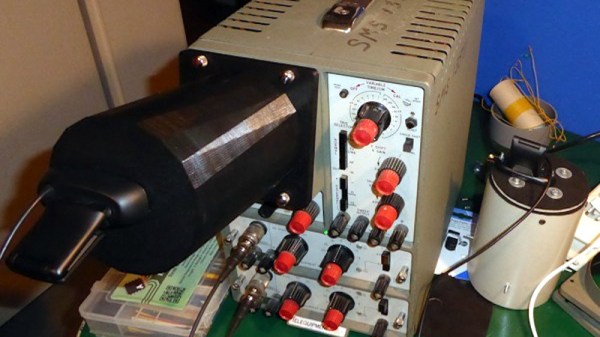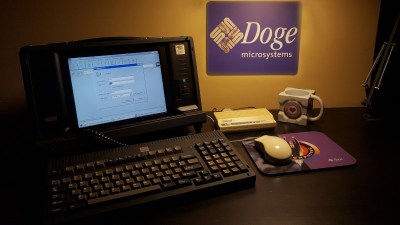Many of us will possess digital oscilloscopes which offer at an affordable price an array of features once unimaginable on the analogue CRT ‘scopes of yesteryear. But those old analogue beasts were fine pieces of equipment when they were made and remain so today. So how can they find a place in the digital age?
Perhaps [Joseph Eoff] has the answer, because he’s fitted his trusty Telequipment D43 with a camera in a 3D-printed attachment, paired with a piece of cross-platform Python/Qt custom software using OpenCV to identify, digitize, and quantify the traces. The software allows viewing the either the digitized trace or the real trace, and derives measurements of voltage and frequency from them. One limitation is that despite the ‘scope being a dual-trace model, the software only has a single set of cursors to measure one trace at a time. All the code can be had from the GitHub repository, should you wish to experiment with it or extend it.
It’s worth thinking for a minute at what price point a remotely decent digital ‘scope starts, then considering the ease with which surprisingly good older analogue instruments can be found on the second-hand market for not a lot. An approach such as this one makes them an even more attractive proposition.
If you’re looking further into enhancements for an analogue ‘scope, how about a logic analyser?






 Both the takedown notice and counter-notice are binding legal documents, sworn under oath of perjury. Notices and counter-notices can be used or abused, and copyright law is famously full of grey zones. The nice thing about GitHub is that they publish all DMCA notices and counter-notices they receive, so
Both the takedown notice and counter-notice are binding legal documents, sworn under oath of perjury. Notices and counter-notices can be used or abused, and copyright law is famously full of grey zones. The nice thing about GitHub is that they publish all DMCA notices and counter-notices they receive, so 













